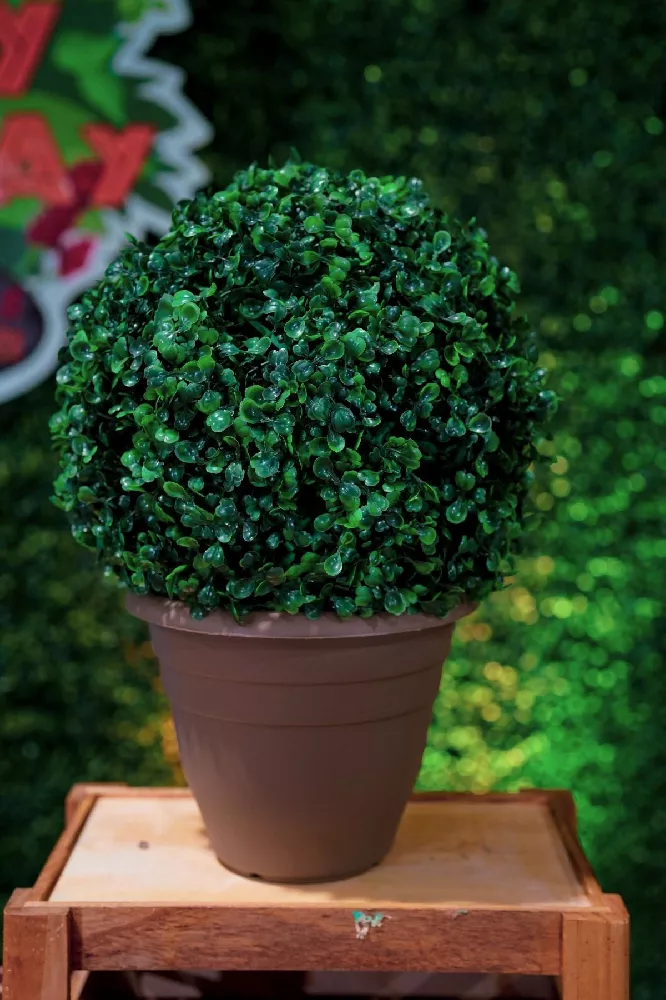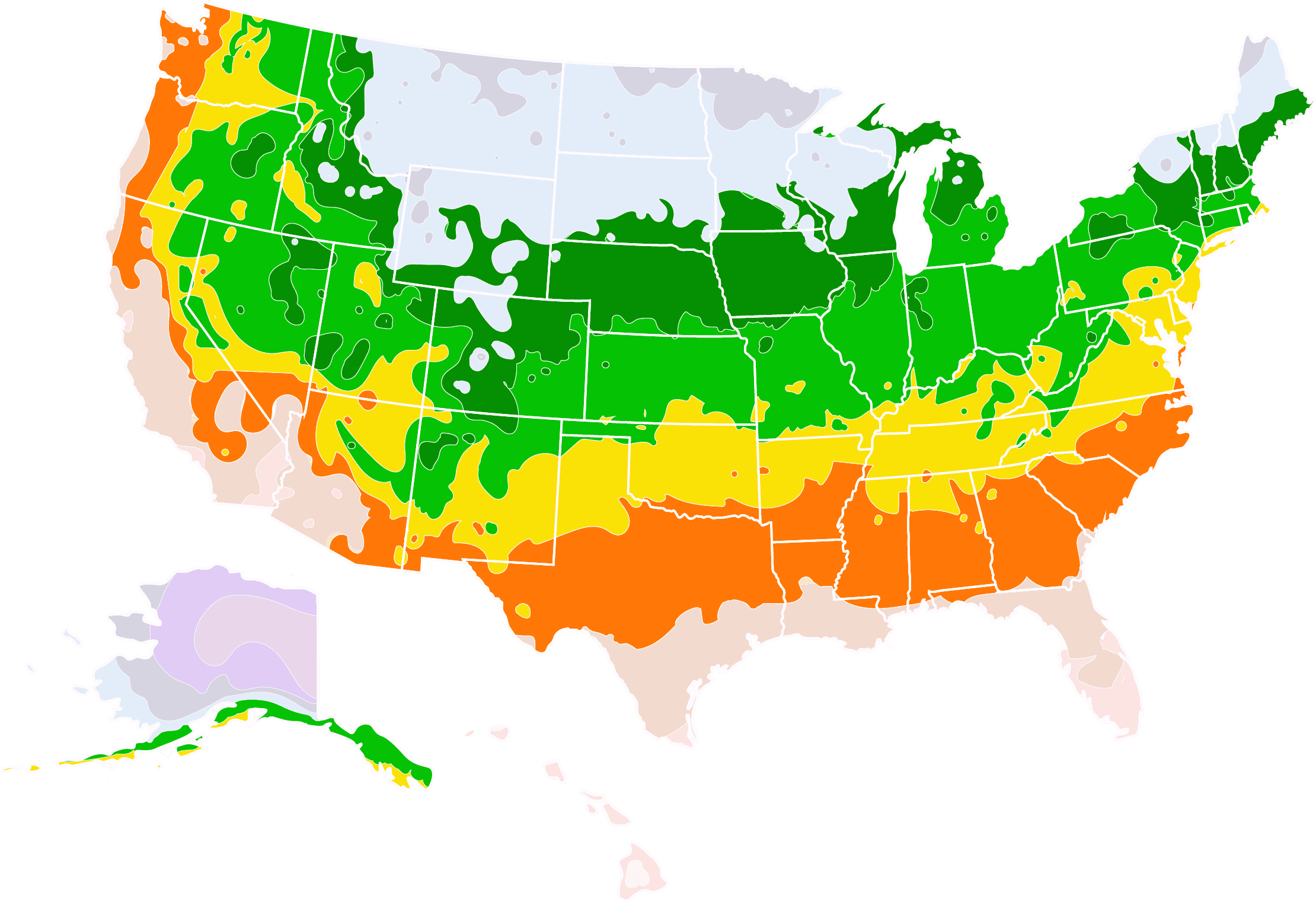- Home >
- Ornamental Plants >
- English Boxwood
English Boxwood for Sale - Buying & Growing Guide
- Ships in 1-2 days
- 1-Year Warranty Eligible
- Pots or accessories are not included unless specified in the product options.
Shipping Details:
Once your order is shipped, you’ll receive an email with a tracking number and estimated delivery date. Most orders ship immediately, but some items are seasonal and may only ship in spring or fall. These products are noted on the website.
Boxwoods have long held a place in well-manicured formal garden designs, and among all the boxwood varieties, the English boxwood, or Buxus sempervirens 'Suffruticosa,' is one of the most popular. This plant is perfect for clipped hedges or for topiary designs. It has a slow growth rate and a dense, compact habit as well, making it easy to manage and shear into nearly any shape you like. This plant also holds an advantage over other boxwoods, as it often proves to have better pest resistance.
- The English boxwood has a slow growth rate and compact size.
- It works well as a hedge or as a topiary.
- It has better pest resistance than other boxwoods.
Plant Care
Sunlight

Both full sunlight and partial shade are acceptable for this plant.
Watering
Water about once per week during the growing season. Increase watering rate during drought.
Fertilizing

Feed with a balanced fertilizer once per year during early spring.
Planting and Care
Planting instructions
Start the planting process by digging a hole that is as deep as the root ball is tall and about twice as wide. Then, loosen the outside of the root ball and the inner edges of the hole to encourage spreading roots. Ideally, you should plant your English boxwood in soil that is somewhat alkaline, such as limestone soil. The growing location for this plant can receive either full sunlight or partial shade.
Watering and nutrients
Provide newly-planted English boxwood shrubs with deep watering about once per week or more. After this plant has had a few years to grow, you should continue watering it about once per week during the hotter parts of the year. During droughts and heat waves, you’ll want to increase your watering rate to ensure consistent soil moisture. The best way to fertilize an English boxwood is to feed it in early spring with a mix that has equal amounts of nitrogen, phosphorus, and potassium.
Pollination
The small, cream-colored flowers of the English boxwood appear during the spring months of April and May. These flowers are so small that you may not notice them by sight at all. However, you may notice their scent, which can be quite fragrant and does attract pollinator insects. The flower clusters that appear on a boxwood include both male and female reproductive structures, which allows this plant to self-pollinate, which eventually results in small capsule fruits.
Pruning
The majority of your pruning should take place during the early spring. This is the time of year when you can dictate the overall form of this plant via shearing. However, you can continue to perform light trimming jobs throughout the year to maintain your desired form. Since this plant responds so well to pruning, you’ll have the chance to trim your boxwood into a neat hedge or, if you please, to create interesting shapes. You should also use your pruning to take out any parts of the plant that show signs of disease or damage.
Pests, diseases, and animals
Compared to other popular boxwoods, the English boxwood cultivar is better able to ward off some pests. Mainly, the English boxwood is more resistant to the box leaf miner than other boxwood varieties. Still, the English boxwood can have pest problems, with nematodes, scale, and mealybugs being some of the most prevalent. Disease issues can also occur for this plant, including root rot, canker, sun scald, and twig blight. Occasionally, poorly drained soils can also lead to leaf discoloration.
Achieving maximum results
Although it is an evergreen plant with inconspicuous flowers, the English boxwood has a lot of ornamental value. With the correct placement and pruning, this plant can easily become one of the most prevalent focal points in your garden. Whether you prune your boxwood as a topiary or allow it to take on its naturally rounded form, it is sure to impress with its distinct shapes and lush foliage. This plant is also one of the best species to use for formal hedges.
FAQs
How far apart should you plant English boxwoods?
How fast does an English boxwood grow?
The English boxwood is a very slow-growing plant, which makes it quite easy to control in your garden. Typically, this plant adds about 6 inches or less of new growth each year. That slow growth is part of the reason why you can plant these shrubs so close together when creating a hedge. Slow growth also ensures that the English boxwood will not grow beyond your control and begin to compete with other plants for sunlight, soil nutrients, and growing space.
Do English boxwoods require a lot of maintenance?
The amount of maintenance you'll need to perform for an English boxwood varies depending on how you want your boxwood to look. For example, if you wish to create a topiary or a formal hedge with your boxwood, then you'll need to keep up with regular pruning and shearing each year. By contrast, if you want your boxwood to grow more naturally, your maintenance will be much less.
Compare Similar Products
You can't add more Product Name - Product size to the cart.
OK







